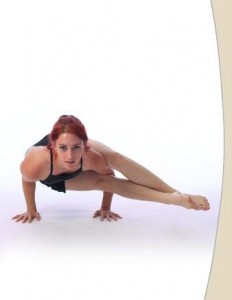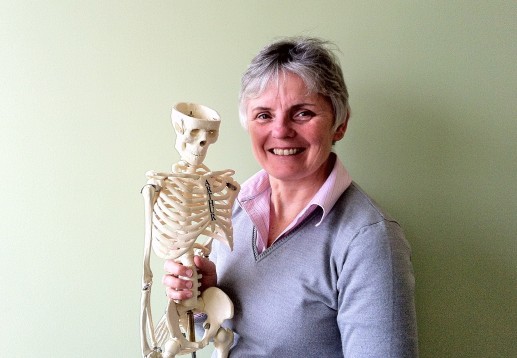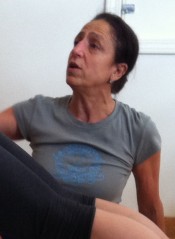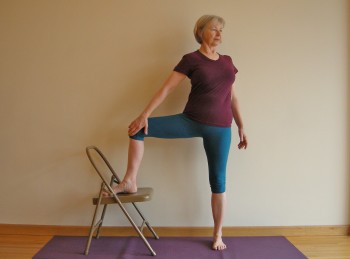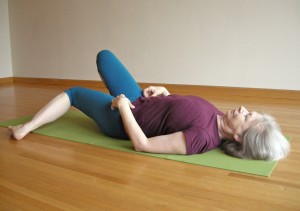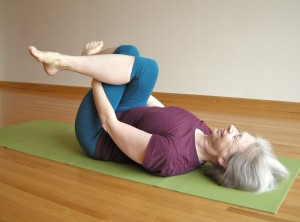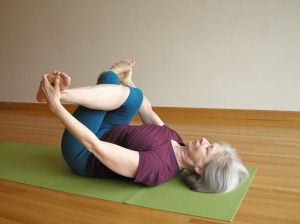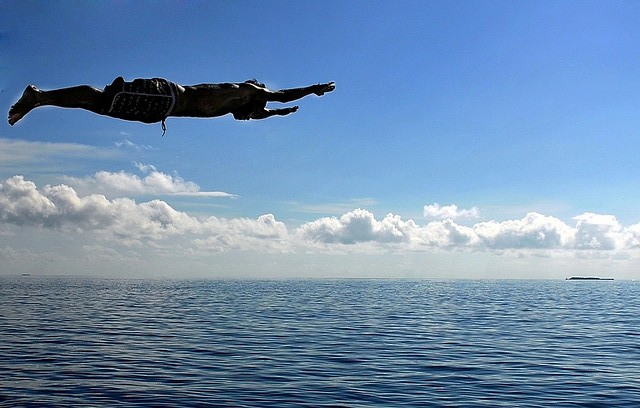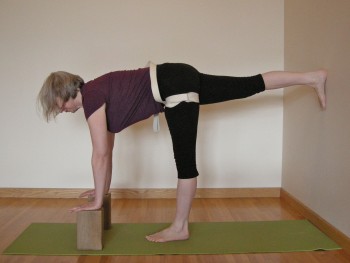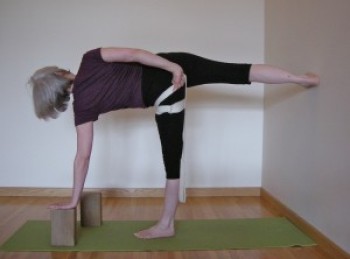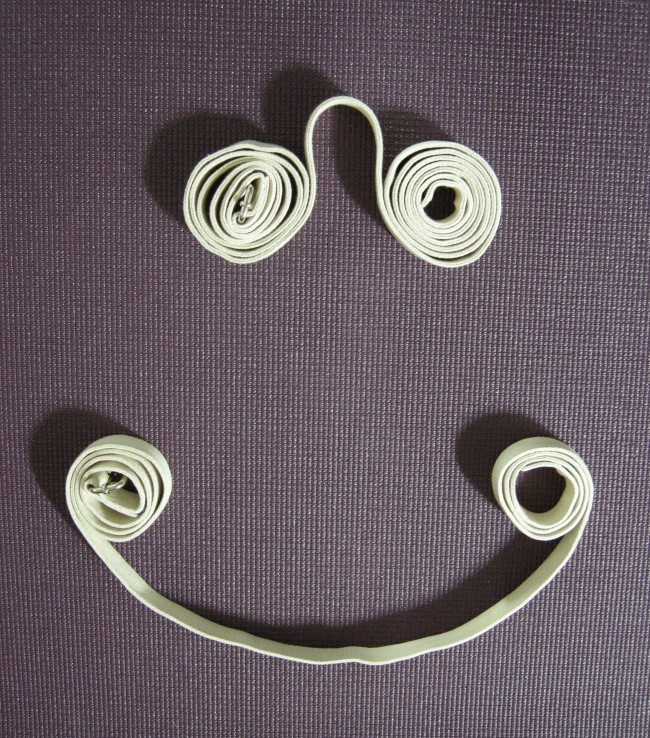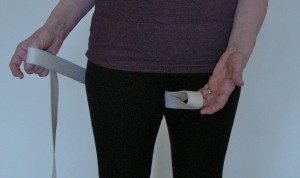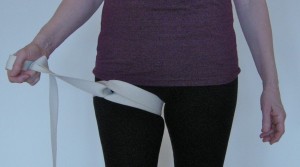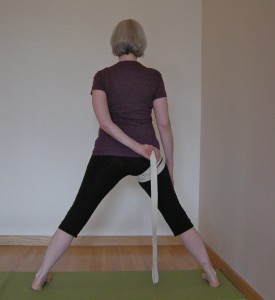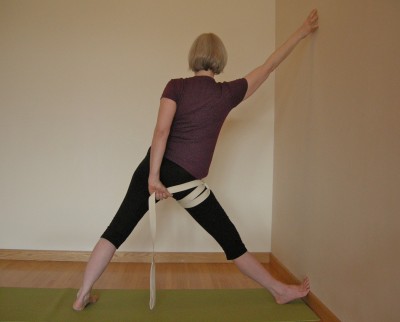
Author Kelly McGonigal: behind those soft blue eyes lies a will of steel, and under that suit is a yoga teacher.
I used to think that willpower was a moral issue.
Good, strong people did difficult tasks first thing every morning and never lost their self-control when they were tired or hungry.
Bad, weak people failed because they didn’t have the moral fibre to do what was right in the moment.
My concept of willpower was much like the old tale of the industrious Ant and the playful, improvident Grasshopper – bad news if you, like me, find yourself identifying with the Grasshopper.
It’s also, it turns out, especially bad news if you’re hoping to use willpower to create a regular yoga practice.
Lately I’ve learned that as soon as doing your practice makes you “good” and not doing it makes you “bad,” you’re far less likely to practice than you are to roll over and go back to sleep in the morning, or find just one more interesting link to click in the evening.
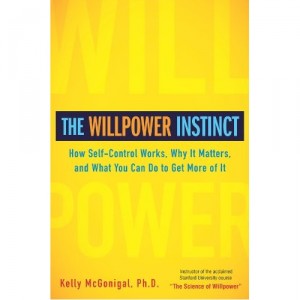 My change of perspective comes thanks to psychologist and yoga teacher Kelly McGonigal’s new book, The Willpower Instinct: How Self-Control Works, Why It Matters, and What You Can Do To Get More of It
My change of perspective comes thanks to psychologist and yoga teacher Kelly McGonigal’s new book, The Willpower Instinct: How Self-Control Works, Why It Matters, and What You Can Do To Get More of It.
The short story is that willpower is a set of complex relationships between different parts of the brain, very much as though we had two or more separate people living inside us, the Ant in one location, and the Grasshopper in another. Surprise: we need both of them.
McGonigal, (who also has a book titled Yoga for Pain Relief: Simple Practices to Calm Your Mind and Heal Your Chronic Pain), based The Willpower Instinct on a course she teaches at Stanford University. And she suggests you take it slowly, like a course, practicing willpower experiments and challenges over 10 weeks.
I borrowed the book from the library, and I think it’s so useful that I’ve ordered it from Banyen Books. One of its delights is the way that McGonigal’s roundup of the latest research in the science of self-control reinforces what is essentially a yogic perspective.
Once I have it for longer than three weeks, I’m going to list my top willpower challenges, and start tackling them one at a time.
Wish me luck.
In the meantime, here are five truths that stood out for me.
1. Willpower is all about knowing what you want, in detail. Or in McGonigal’s words: “To say no when you need to say no, and yes when you need to say yes, you need a third power: the ability to remember what you really want.”
You want a yoga practice, yes. But that’s too vague and abstract, and it won’t spur you into action when it would be easier to stay in bed or on the couch.
Do you want to have a comfortable home in your body as you age? To stabilize your emotions and control your moods? To be stronger, more flexible and better at your sport? To stave off dementia? To do the cool poses in the back pages of Light On Yoga?
Focus on exactly what you want and why you want it. Then, when the temptation to put off practice arises, you won’t be saying no to a vague “yoga practice” but to things that really matter to you.
2. Willpower failure comes from not being conscious in the moments when we make choices – no easy task, since much of the time we make choices on autopilot.
For example, one study asked people how many food-related decisions they make in one day. On average, they guessed 14. But when they tracked their decisions, the average number was 244.
To get up early to practice, you have to choose not to stay up late. To practice for half an hour when you get home from work, you have to choose not to check email, start dinner, or make a phone call. You might also have to choose to have a late afternoon snack, so you don’t walk in the door hungry, fill up on a quick snack, and then feel too uncomfortably full to practice.
When you choose to lay out your clothes the night before, and to roll your mat out, so everything is ready to go in the morning, you’re creating a positive momentum that makes it much less likely that you’ll choose to stay in bed and sleep.
5. Meditation is like weight training for the brain.
It doesn’t have to be complicated. McGonigal suggests a simple mindfulness meditation of watching the breath.
And you don’t have to be “good” at meditating to get results. No matter how hard it may be to keep our minds focused on our breath moving in and out, each time we catch ourselves off on a train of thought, we wake up, just a little more.
Practicing awareness makes it easier to stay awake to our choices while we make them.
What’s startling is that even 10 minutes of meditation a day will change the structure of the brain and increase our self-control: “regular meditators have more gray matter in the prefrontal cortex as well as in regions of the brain that support self-awareness.”
And here’s a bonus: nothing improves asana practice more than a brief centering and meditation before you start.
4. Guilt is counter-productive.
Back to the Ant and the Grasshopper. It turns out that as soon as doing your practice makes you “good” and not doing it makes you “bad” you’ve dramatically upped the odds against practicing.
As McGonigal says in this interview for CBC Radio’s tech program Spark, “When we moralize a behavior, and we say that doing one thing is good and the other thing is bad, we somehow confuse that with one thing is unpleasant and unfun and boring, and the other thing is pleasurable and indulgent.”
In a flash we forget what it is we really want – the rewards of practice – and expect pleasure from what we really don’t want, which is yet more procrastination.
McGonigal suggests that we think past our immediate resistance and see the more difficult behavior of coming to the mat not as proof that we’re “good,” but only as the means to what we really want.
5. Being tough on yourself when you fail makes it more likely that you’ll fail again.
It turns out that we don’t really need a harsh, self-critical inner voice to keep us on track.
“Study after study shows that self-criticism is consistently associated with less motivation and worse self-control,” McGonigal writes.
From university students procrastinating on exams, to dieters who were asked to choose and eat a donut, the less guilty the subjects felt about their lapses, the less likely they were to procrastinate or overeat in the future.
To succeed, it seems we have to learn to practice self-forgiveness – an oddly difficult behavior, and one that McGonigal’s students actively resist.
“You’d think I had just suggested that the secret to willpower was throwing kittens in front of speeding buses,” she writes.
So do the hard thing: forgive yourself when you fail, recognize that your setback makes you human, not uniquely flawed, and give yourself the support you’d give a friend who had experienced the same setback.
If this was your kind of post you might also like:
Four Ways the Brahma Viharas Can Keep You Clear
Discipline Not Working? Try Indulgence for a Change
Smack in the Middle of the Mandala: It’s a Good Place to Sit

